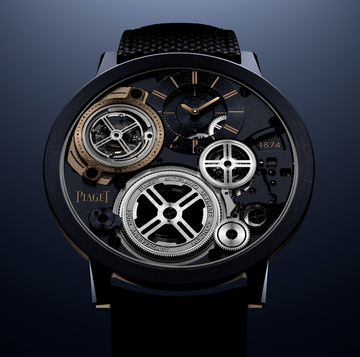
The 50 Most Important Watches Ever
From design landmarks to technical firsts to models that invented a whole new category, these watches have had a substantial impact on watchmaking
What makes a watch ‘important’?
There are the big leaguers – chronometers that changed the game for maritime travel; field watches that synchronised soldiers across two World Wars; space age watches that got astronauts safely back to Earth. There are the record breakers – watches that have gone deeper, higher or were more ‘complicated’ than ever before. There are watches that democratised design – step forward the $3.75 Ingersoll ‘Mickey Mouse’ from 1933; take a bow the first twelve Swatches released exactly five decades later. And there were watches that did the exact opposite – head-spinningly bonkers and eye-wateringly expensive creations like MB&F’s HM4 Thunderbolt and Richard Mille’s RM 011 Felipe Massa.
There are many more categories and many, many, many more watches. Whittling the Most Important down to just 50 sometimes seemed a task akin to studying the history of time itself. Happily, we had the next-best thing to Stephen Hawking to help us. A crack team of industry experts, drawn from all corners of the watch world, from museums to retail, publishing to brand bosses, journalism to actual professors, as our voting panel.
Accept no substitutes. This is the definitive list of the 50 Most Important Watches Ever. (Did we miss any?)
Patek Philippe Calatrava ref. 96 (1932)
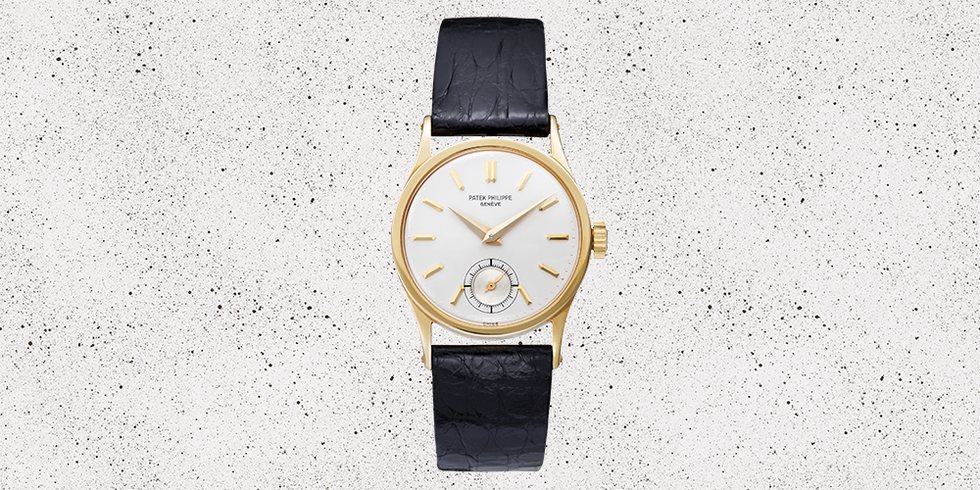
THE WATCH THAT BUILT PATEK PHILIPPE
Hyperbole? Perhaps — certainly very few mega-brands owe their success to just one single watch — but there is a strong case to be made. As the 1930s began, Patek, Philippe & Cie was in financial trouble, and in 1932 was acquired by the Stern family, which remains in control today. Seeing the need for a simple, easily marketable watch to put the business on a stable footing (in contrast to the complicated watches that were its stock-in-trade), they introduced the first Calatrava, the reference 96 in the same year, a 31mm design that espoused Bauhaus principles. Details of its genesis are scant, its designer unknown; the name comes from a symbol used by 12th-century Castilian knights, registered by Patek Philippe 45 years earlier but never used. No one knows why. It’s not even clear why it started with number 96. (Don’t believe stories online that the Calatrava was designed by British antique watch dealer and enthusiast David Penney; he was commissioned in the 1980s to illustrate an authoritative hardback book on the brand’s history, and journalists mistook his signature against drawings of the ref. 96 for the name of the original designer. Penney was born well after 1932 and is alive and well today.) What is more certain is that ref. 96 was a hit; powered by a respected LeCoultre calibre it provided a blank canvas for all manner of dial designs and iterations, and remained in production for 40 years. It might not leap immediately to mind when you mention the brand name — with the Nautilus on its books, and a formidable history of perpetual calendars, split-second chronographs, worldtimers and minute repeaters, you can hardly blame fans for sometimes overlooking the humble Calatrava — but it is the bedrock upon which so much great watchmaking stands.
Ingersoll ‘Mickey Mouse’ (1933)

CARTOON WATCHES FOR ADULTS? IT’LL NEVER CATCH ON
In 1933, two companies faced bankruptcy. One was Ingersoll-Waterbury, a watch firm that grew out of a New York Mail business. The other was Disney. A marketeer and former mink-hat salesman named Herman “Kay” Kamen rescued both — despite apparently falling asleep in the pitch meeting. His solution? A watch featuring Mickey Mouse, his yellow-gloved hands rotating to tell the time. Response to the $3.75 timepiece was immediate. Macy’s sold 11,000 the first day it went on sale, and within two years Ingersoll had added 2,800 staff to cope with demand, and an original Ingersoll Mickey was placed into a time capsule at the 1939 World’s Fair. Today, “character watches” are big news; case in point: Oris’ runaway 2023 hit, a £3,700 watch featuring Kermit the Frog. Meanwhile Mickey (and Minnie) Mouse now grace the Apple Watch and will speak the time when you press the dial. That’s progress for you.
Blancpain Fifty Fathoms (1953)
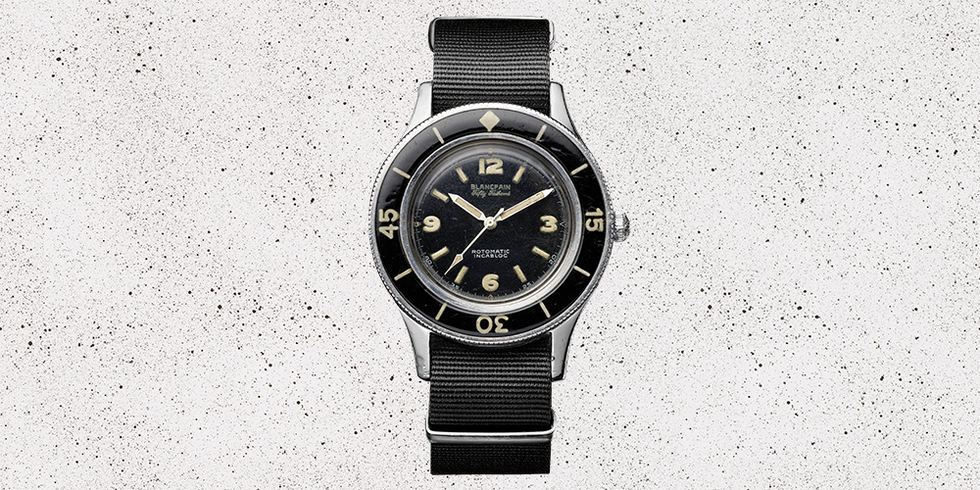
THE DIVE WATCH BLUEPRINT
Where the diving watch as we know it began, exactly 70 years ago. The turning bezel for dive-timing, the bare-essentials high-vis dial, the streamlined-but-watertight case: all came about when Blancpain’s scuba-fan boss Jean-Jacques Fiechter teamed up with French war heroes Robert Maloubier and Claude Riffaud, who needed a watch for their new commando unit, to invent the ultimate all-action underwater wristwatch. Rolex had similar ideas — its Submariner followed soon after. But Blancpain’s military-approved cult classic was foundational; rare vintage models are collector grails, and modern versions remain big sellers for the brand.
Rolex Day-Date (1956)
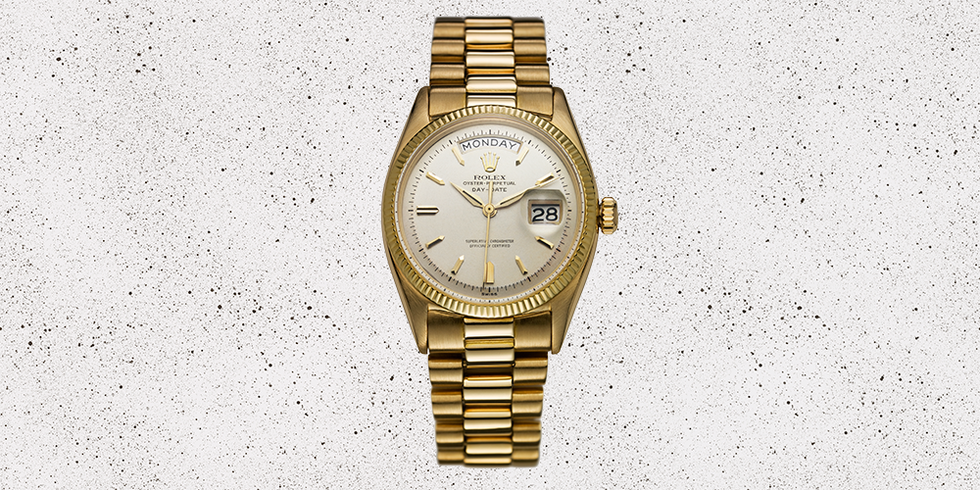
PRESIDENTIAL
Sure, it was the first watch to show both the date and the full day of the week, but the Day-Date’s function has always been secondary to its aura. Launched in 1956 in 18-carat gold or platinum, it came with a newly created band: the President Bracelet. After being worn by Lyndon B. Johnson – and scandalously gifted to John F. Kennedy by Marilyn Monroe – the nickname stuck. It’s the watch that most defines Rolex’s association with success and prestige, an idea that's remained as constant as the Day-Date’s unmistakable look. It’s not quite true that the Day-Date is exclusively produced in precious metals — an “entry-level” steel version occasionally comes up at auction, although since only five were ever prototyped, not at an entry-level price.
Audemars Piguet Royal Oak 5402 (1972)

FUSING THE INDUSTRIAL AND THE EXOTIC
Given both the relentless hype that attaches itself limpet-like to the Royal Oak, and the multiplicity of iterations and styles Audemars Piguet has birthed over the years, it’s easy to forget just what a formidably clever, intuitive and ground-breaking design it was back in 1972.
Tasked with matching the robustness and versatility of a steel sports watch with the crafted beauty that was Audemars Piguet’s stock-in-trade, the designer Gérald Genta came up with the Royal Oak in a single overnight session. It sealed both his and Audemars Piguet’s future legacies, and begat the “sports-luxe” genre in one fell stroke.
Genta’s blueprint was an inspired synthesis of the industrial and the exotic. It was streamlined, housing an ultra-thin automatic movement, and with a look dominated by a screw-laden octagonal bezel, on a case that merged seamlessly into a complex, tapering bracelet. The brutalist dial was subordinate to the gleaming geometries of the case, where contrasting brushed or polished finishes were assiduously hand-applied. The bracelet alone was so complicated that it needed watchmakers rather than case technicians to assemble it.
The Royal Oak did for steel watches what the era’s high-tech architects were then doing for steel buildings — elevating the material of industry and kitchen cutlery to the level of the sublime. “The noble metal of modern-day cathedrals,” was how Genta termed it, according to Bill Prince, author of Royal Oak, from Iconoclast to Icon. At the time, the Royal Oak was the most expensive steel wristwatch ever made, but it unleashed a genre whose impact would only truly be felt in the following decades — and never more so than right now.
Hublot Big Bang (2004)
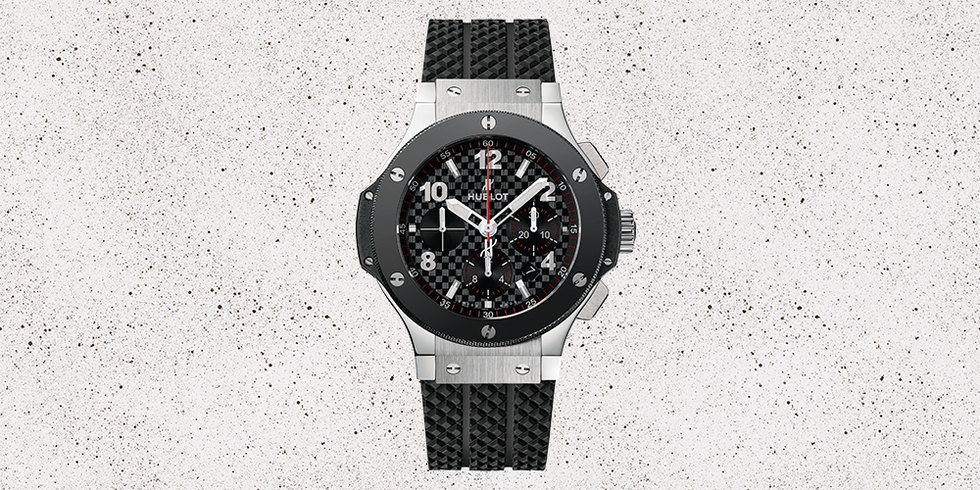
DESIGNED TO THE MAX
With its brash and bold designs, Hublot is the opposite of discreet luxury — something that tends to wind up serious watch collectors. The brand’s “the art of fusion” tagline is embodied in its flagship Big Bang, the first of which layered up ceramic, magnesium, tungsten, Kevlar, rubber and steel into an eye-popping (and prize-winning) new direction for watch design. Since every Big Bang is technically limited, it also pre-empted today’s drop culture, with future watches incorporating silk, denim, diamonds and sheep’s wool. “People want exclusivity,” its creator Jean-Claude Biver told The Economist. “So you must always keep the customer hungry and frustrated.”
FP Journe Tourbillon Souverain ‘Souscription’ (1999)
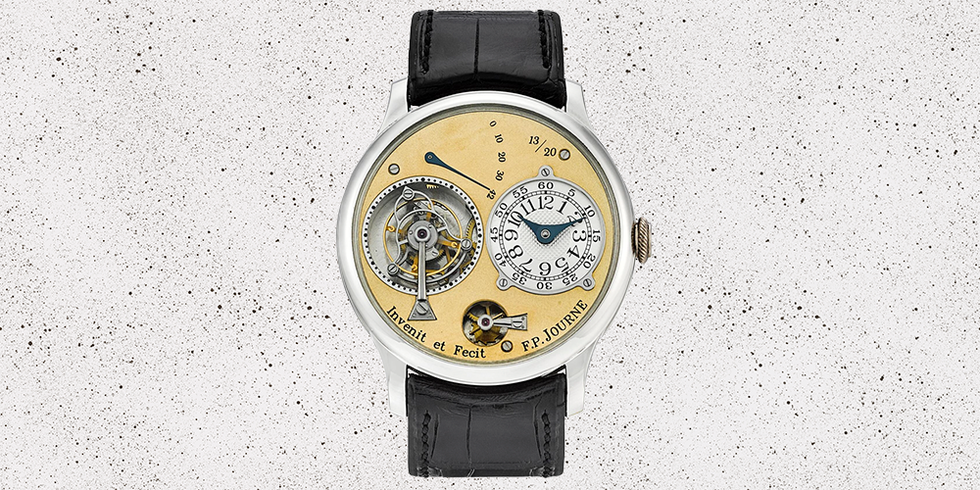
THE ARRIVAL OF A NEW MASTER
François-Paul Journe produced his first wristwatch in 1991, to a collective shrug from a world not yet ready to embrace artisanal, anachronistic masterpieces from unknown names. Jump ahead eight years and the mood had changed; Journe set up his own brand and took commissions to make 20 tourbillons — selling the watches by “subscription”, ie: half up-front, an idea borrowed from Abraham-Louis Breguet. Journe’s output throughout the past two decades has been prodigiously inventive, but it took the pandemic to send things into the stratosphere; auction values of the Tourbillon Souverain tripled between 2019 and 2020.
Rolex Explorer (1953)
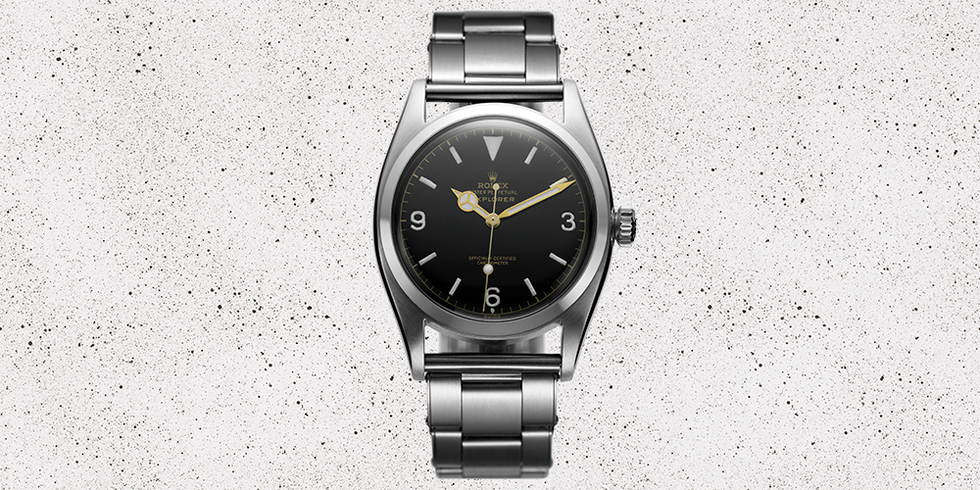
THE PERFECT WATCH?
Beloved of die-hard Rolex enthusiasts and casual “one-watch guys” alike, the modern Explorer retains the spirit of the watches that accompanied Tenzing and Hillary (almost) to the top of Everest in 1953 (both climbers in fact wore models by British brand Smiths to the summit itself).
After the ascent, Hillary’s Rolex was returned to the watch company for tests to be conducted on how it had weathered its high-altitude journey, and it is now on display at Zurich’s Beyer Museum. Despite recent flirtations with precious metals, the Explorer remains a paradigm of honest, simple watchmaking that for many really is all the watch you need.
Vianney Halter X Jeff Barnes Antiqua Perpetual Calendar (1998)

MAKING THE IMPOSSIBLE POSSIBLE
Remember steampunk? In the late-1990s, “Victorian sci-fi” had a cultural moment. It gave us one of the worst films of the decade, Wild Wild West, emo-lads in top hats and, on the plus side, this spectacular timepiece. Inspired by Jules Verne and HG Wells, American creative Jeff Barnes envisioned an impossible watch with multiple porthole dials, rivets and an invisible rotor. Iconoclast watchmaker Vianney Halter made the impossible possible.
Halter and Barnes propelled watch-making into a strange alternative universe. A wormhole opened that subsequent visionaries — MB&F, Urwerk, De Bethune etc — would burst through, reimagining what high-watchmaking could really be.
Seiko 5 Sportsmatic (1963)
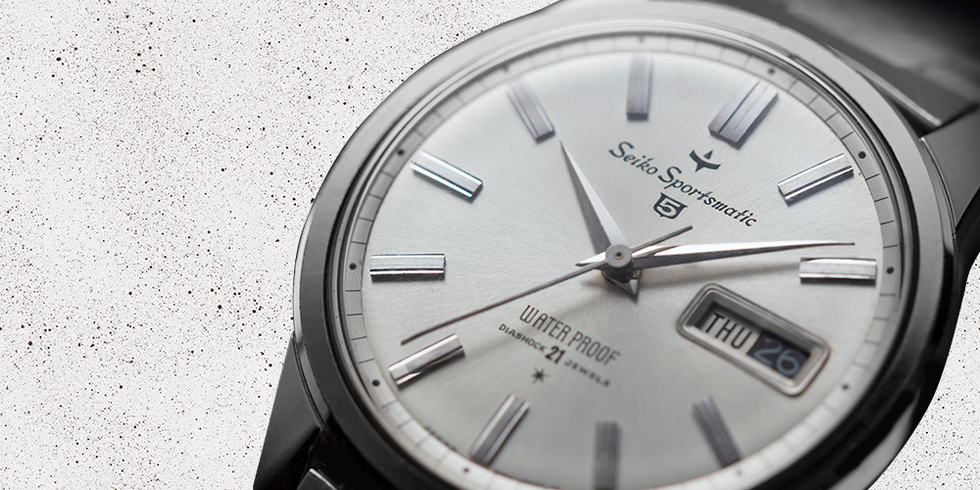
NEW TO COLLECTING? START HERE
Through countless iterations down the decades, the “5” shield logo on the Seiko 5 has symbolised the ultimate sturdy, go-anywhere, do-anything all-rounder wristwatch. Affordable, capable and just damn cool, the Seiko 5 has even accrued its own entire subculture around collecting and modding. No collection is complete without one, and for a lot of watch nuts, it’s the place where it all begins
Omega Speedmaster Professional (1957)
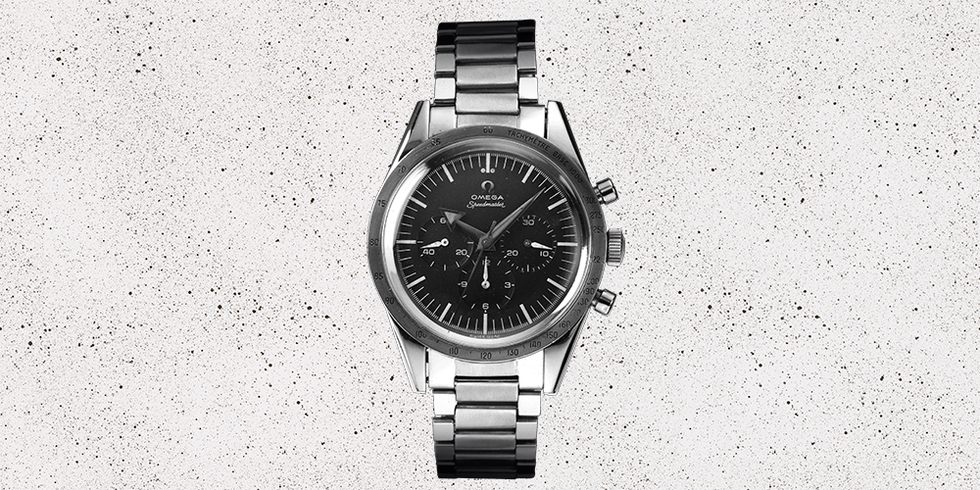
LOVED ON EARTH AND BEYOND
In the age of orbiting space stations, communications satellites and Mars rovers, there is something quaintly old-school about a mechanical watch being used in space. Computers may crash but, the thinking goes, a mechanical watch will continue to work in all conditions: high temperatures, below zero, low gravity and when all tech has shut down, in darkness. Omega’s Speedmaster line was made with racing-car drivers, not astronauts in mind. It was the first chronograph with a tachymeter scale on the bezel, to measure speed over distance. But the design caught the eye of Nasa astronauts Walter Schirra and Leroy Cooper.
The story goes that the pair then lobbied Nasa operations director Deke Slayton to make the Speedmaster the official watch for use during training, and, ultimately, flying. In 1964 Slayton issued an internal memo stating the need for a “highly durable and accurate chronograph to be used by Gemini and Apollo flight crews”. Proposals were sent to 10 brands: Benrus, Elgin, Gruen Hamilton, Longines Wittnauer, Lucien Piccard, Mido, Omega and Rolex. Only four answered the call: Rolex, Longines Wittnauer, Hamilton and Omega — with Hamilton disqualifying itself by submitting a pocket watch. The remainder underwent extreme trials: 48 hours at 71°C, four hours at –18°C, 250 hours at 95 per cent humidity, temperature cycling in a vacuum, and so on.
Nasa declared Speedmaster “Flight Qualified for All Manned Space Missions” in March 1965. It went on to become the first watch worn on the Moon — by Buzz Aldrin, in 1969 — and to play a crucial role in the Apollo 13’s re-entry to Earth in 1970, when it was used to time a crucial 14-second burn of fuel. (As seen in Tom Hanks’s 1995 film, Apollo 13.)
It would be remiss of any company not to dine out on marketing gold like this, and Omega has certainly done so, issuing endless Moonwatch variants ever since. Happily, its product backs up the hype. “Speedmasters have it all: great chronograph movements, an amazing case design, fantastic dial and hand aesthetics and an unbelievable history,” says vintage-watch expert Eric Wind.
Omega X Swatch MoonSwatch (2022)

A GENIUS MARKETING PLAY
The watch that no one saw coming, that no one could get hold of, and yet absolutely nobody could avoid back in the heady days of… er, 2022. Can it really only be last year that streets around the world were shut down as mobs of thousands rushed to procure a plastic (sorry, “bioceramic”), battery-powered Speedmaster made by Swatch? MoonSwatch fever may have died down now, but few modern watches have nailed the moment quite so perfectly. Amid a post-pandemic climate of high/low mashups, vibe shifts, blurred cultural lines and hype — so much hype — it nailed the zeitgeist dead-on, becoming the most consequential Swiss watch release since the original Swatch in 1983.
Patek Philippe Ref. 1518 Perpetual Calendar (1941)
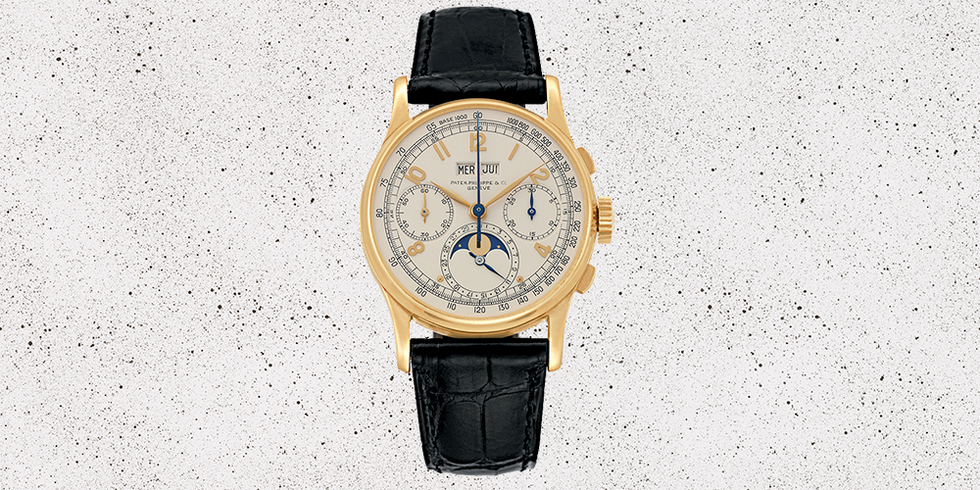
A WRISTWATCH THAT CREATED A GENRE
The perpetual calendar — complex, elegant, poetic — is the emblematic watch of haute horlogerie. And, like so much of haute horlogerie, Patek Philippe defined the form.
Patek introduced its first perpetual for the wrist in 1925. But in 1941 it did the near unthinkable and put the complication into serial production — twice over. Reference 1526 was a perpetual calendar with moon phases, but Reference 1518 really blew the doors off, with a chronograph thrown in and a layout of high-complication magnificence. It wasn’t until 1955 that another brand, Audemars Piguet, was able to compete with its own perpetual calendar, while the perpetual calendar chronograph has remained a signature combination for Patek Philippe and its collectors.
Braun AW10 (1989)

GOOD DESIGN IS MAKING SOMETHING INTANGIBLE AND MEMORABLE
Braun’s concept of German modern industrial design, a mix of functionality and technology, is lauded everywhere from MoMA catalogues to Jony Ive interviews. Its design principles have been applied to calculators, coffee grinders and cigarette lighters. But you could argue the wristwatch is its purest distillation, the work of one of the Braun’s designers, Dietrich Lubs, and Dieter Rams. Taking a lead from 1975’s AB 20 travel clock, its aim was to display time in “the most functional way possible”. That meant white type on a black dial, a yellow second hand that “pops”, and Akzidenz-Grotesk — the font known as “jobbing sans-serif”. As in, it is used for jobs — including New York City’s transportation network. The designer’s designer watch.
Rolex GMT-Master (1955)/ GMT-Master II (1982)

THE WATCH THAT ANNOUNCED THE JET AGE
Well-heeled travellers of the early 1950s encountered a new phenomenon. They didn’t have a name for it yet — consensus suggests that the phrase “jet lag” wasn’t used until the mid 1960s — but the discombobulating effects of flying across time zones were clear. Passengers could bear the inconvenience, but Pan Am, concerned for its pilots, wanted to find a solution. It was naively thought that a device capable of displaying the body’s “home” time at a glance could help overcome the effects — so legend has it, anyway. Rolex produced the GMT-Master reference 6542 in 1954, and the rest is history. The rotating bezel had already seen the light of day in the previous year’s Turn-o-graph (proof that not all Rolexes were lasting hits), but the addition of a 24-hour scale and day-night colour scheme nailed the formula. It’s easy to overlook how bold the two-tone design must have been in the postwar years, and the GMT-Master has maintained that outgoing character. The variation of colours that followed, and the tendency of the early materials to patinate and degrade in interesting ways, have spawned a rich lexicon of nicknames and cemented the reference’s enduring appeal. In modern times, at least prior to 2023’s bonanza of emojis and bubbles, the GMT-Master II was where Rolex went to experiment, developing single-piece ceramic bezels, introducing meteorite dials, gem-set bezels and even subverting its own codes by adding the dressy Jubilee bracelet in 2018. The introduction of a left-handed model in 2022 only added to the hype. Today it is one of the hardest Rolexes to acquire. Mechanically and aesthetically, Rolex hit upon a template that performed a simple task with clarity, character and composure, and left its imitators behind.
Cartier Santos-Dumont (1904)
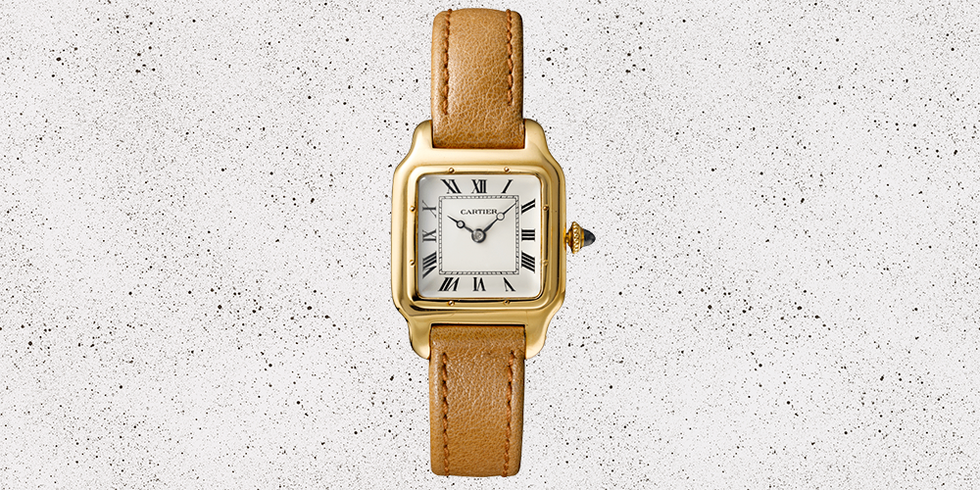
A REAL HIGH-FLYER
The Cartier Santos-Dumont, launched in 1904, claims not one but two places on the watch history books: the first pilot’s watch and the first wristwatch designed specifically for men. Created to get around the impracticality of flying with a pocket watch, it was born after Brazilian pilot Alberto Santos-Dumont raised the issue with Louis Cartier. Given Cartier’s red-carpet-reputation today the watch boasts a decidedly non-showy design. Characterised by eight screws, its case seems to have been influenced by a contemporaneous square pocket watch, with curved lugs and a leather strap designed to make it comfortable to wear on the wrist. Meanwhile, the instantly readable dial design foreshadowed the Art Deco movement of the 20s and 30s and remains a look that defines Cartier watch designs to this day.
With headlines declaring “Mr Santos-Dumont’s First Success with a Flying Machine” still fresh in people’s minds, by 1911 Cartier was marketing “the Santos-Dumont watch” in platinum and gold, its daring-do aviation connection piquing the interest of a new demographic: men. The model would be relaunched by Cartier twice after. In 1998, to celebrate the Santos-Dumont’s 90th anniversary, and in 2005 as part of the Collection Privée Cartier Paris.
In 2018 Cartier made it available in steel, the first time the watch had appeared in a non-precious metal, putting it within reach of a new consumer. Its timing was prescient — with interest in men’s watches exploding, there was a newly design-literate customer on the market. Cartier may not use the fanciest movements or the trendiest materials. Instead, it outpaces the competition with 100 years of rock-solid designs, and watches that look unique.
Richard Mille RM 011 Felipe Massa (2007)
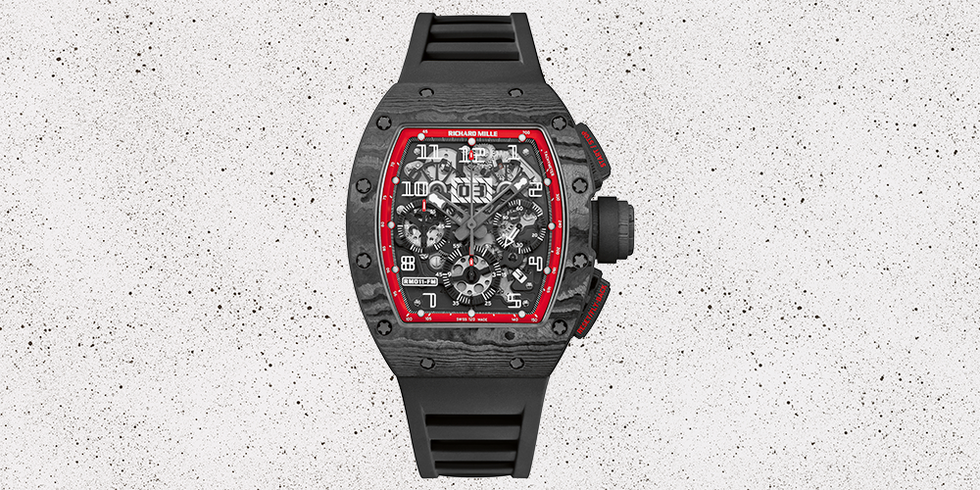
RICHARD MILLE DOESN’T SELL MANY WATCHES. AT HIS PRICES, HE DOESN’T NEED TO
Every year, Morgan Stanley produces a financial report on the Swiss watch industry. Nine of the top 10 brands by revenue date back 100 years or more; the same nine all produce at least 50,000 watches a year.
The outlier is Richard Mille: barely 21 years old and making a shade over 5,000 watches a year, it outranks giants like Longines, Breitling and Vacheron Constantin. The secret sauce is complex, but it owes a lot to the technically innovative watches worn by Mille’s sporting ambassadors — and that all began with Massa, way back in 2007.
Seiko Astron 35SQ (1969)
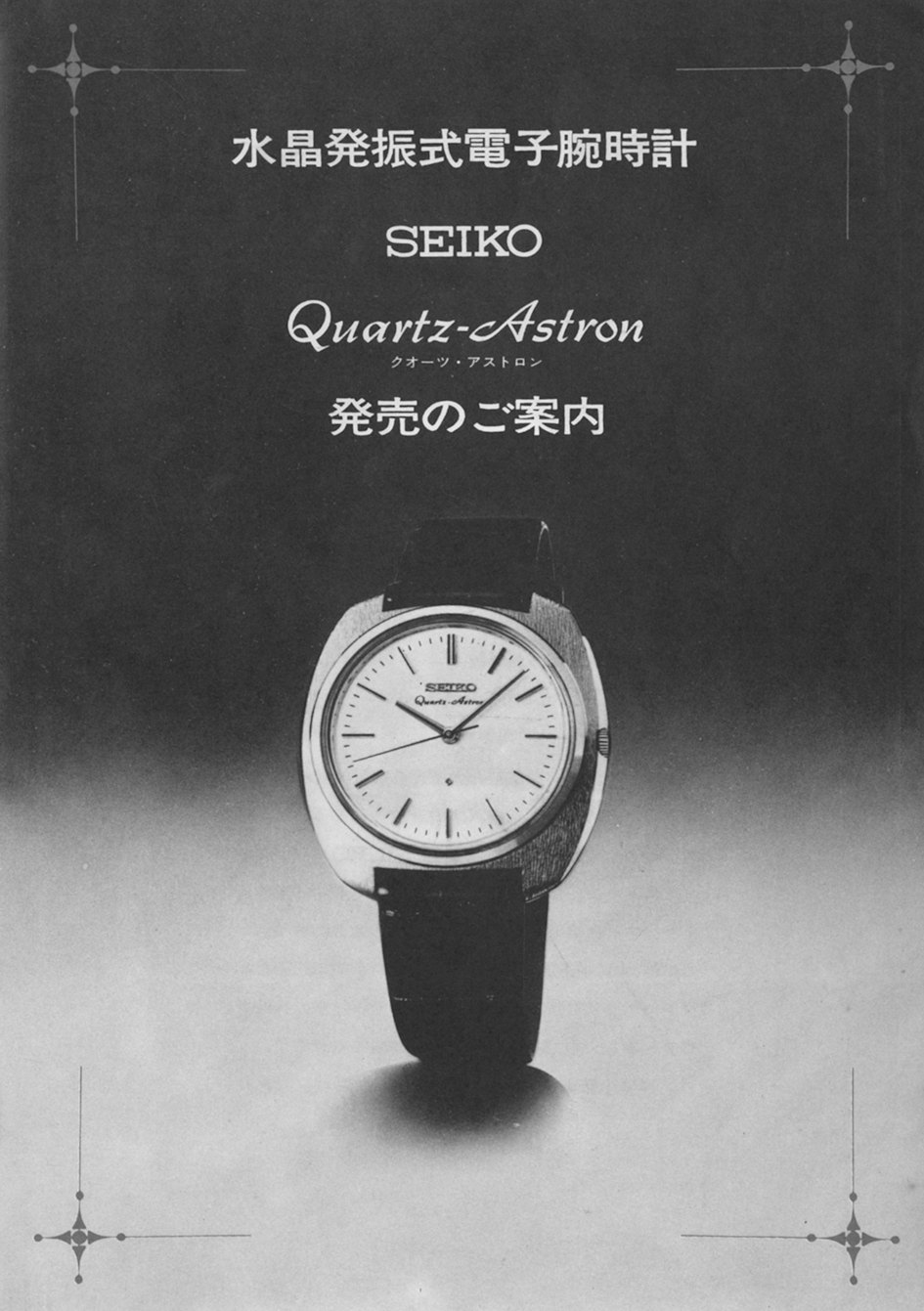
THE FIRST QUARTZ WATCH
On Christmas Day 1969, Seiko gave the world its most important gift: the first quartz-powered wristwatch. A decade in development (during which time the Japanese had shrunk the technology from the size of a filing cabinet to something you could wear), it was the harbinger of seismic, lasting change. The mass production of cheap quartz watches that followed in the 1970s wrought catastrophic damage on Swiss watchmaking, although the scale of the job losses and closures was down to currency devaluation and the stagnant, uncompetitive structure of the industry as much as the threat of marauding outsiders. Perhaps unfairly, the Astron is forever associated with these effects, rather than as a genuine innovation that made watches more accurate and more affordable.
Casio F-91W (1989)
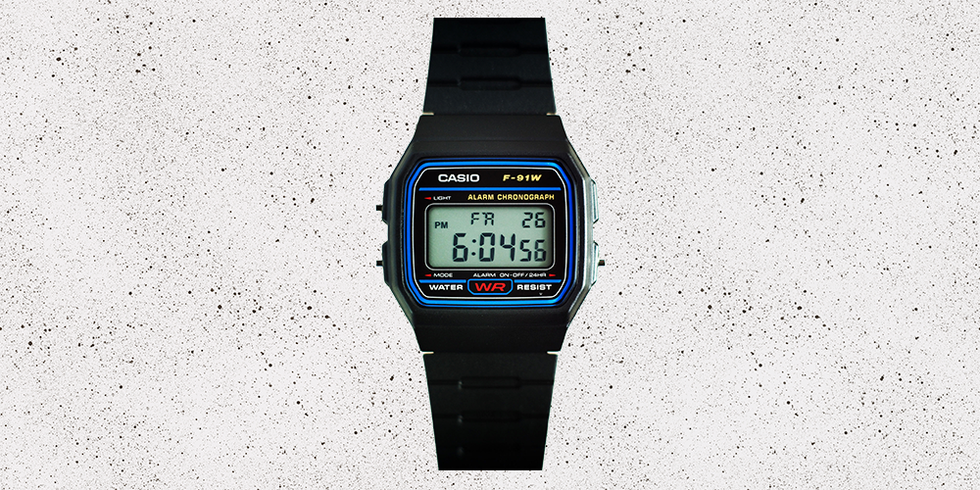
ONE OF THE CHEAPEST WATCHES IS ALSO ONE OF THE BEST
Almost 35 years after its launch, the F-91W remains not just the world’s most popular digital watch, but the most-purchased watch on the planet. Created by Ryusuke “G-Shock” Moriai as his first design for Casio, it is technically and materially inferior to every other watch the brand produces. That’s not the point. The F-91’s charming resin design, iconic shape, accuracy, perfectly judged number of functions and — last but not least — £15 price make it a must-own. The backlight is absolutely terrible, though.
Breitling Navitimer (1954)

A WATCH FOR HIGH-FLYERS
Technically, you could land a plane using just this watch’s info-packed bezel, but it would be a brave man who’d try. Still, the development of the Navitimer (“navigation” + “timer”) offered something no other watch manufacturer had ever proposed: a chronograph combined with a slide rule, enabling pilots to perform vital calculations like average rate of speed, fuel consumption and converting miles to kilometres. Originally only available to accredited aircraft owners and pilots, the Navitimer was also the watch world’s first automatic chronograph.
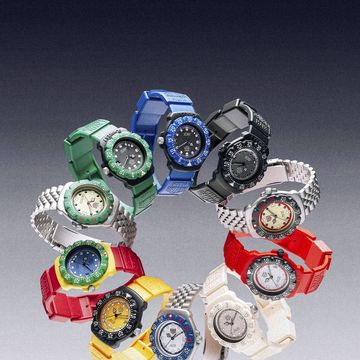
Where To Buy the Tag Heuer x Kith Formula 1 Watch
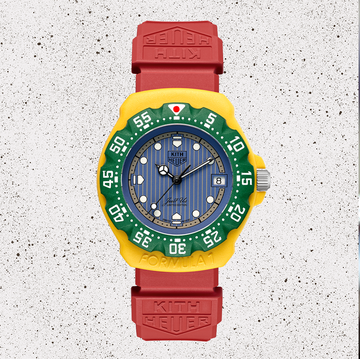
The Story of the Rarest Tag Heuer F1 Watch

The 41 Best Watches a Man Can Buy In 2024

How Piaget Became the World's Hottest Watch Brand







